
Lights! Camera! Action! In the United States, movie theaters run films mostly out of Hollywood, but it should come as no surprise that many, many studios beyond Hollywood and outside of the United States produce movies and films. These studios make films that reflect their own countries' and peoples' histories, styles and cultures. So this August, sit back, pop some popcorn and read up on film cultures and movie makers from around the world!
A physical book display is now available at the Libraries with the selection rotating weekly. Some of the eBooks listed below also have a physical listing. Please check the availability. Special thanks to our Materials Processing Coordinator Leah Zande for compiling this list.
Cosmopolitan Cinema
Chan, Felicia (2017)
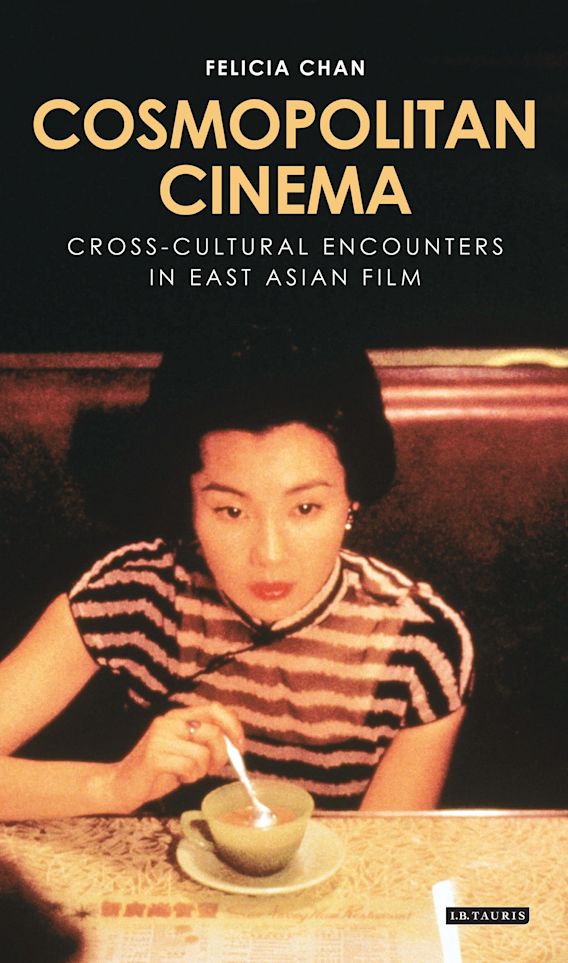 Films are produced, reviewed and watched worldwide, often circulating between cultural contexts. The book explores cosmopolitanism and its debates through the lens of East Asian cinemas from Hong Kong, China, Malaysia and Singapore, throwing doubt on the validity of national cinemas or definitive cultural boundaries.
Films are produced, reviewed and watched worldwide, often circulating between cultural contexts. The book explores cosmopolitanism and its debates through the lens of East Asian cinemas from Hong Kong, China, Malaysia and Singapore, throwing doubt on the validity of national cinemas or definitive cultural boundaries.
Case studies illuminate the ambiguously gendered star persona of Taiwanese-Hong Kong actress Brigitte Lin, the fictional realism of director Jia Zhangke, the arcane process of selection for the Best Foreign Film Oscar and the intimate connection between cinema and identity in Hirokazu Koreeda s Afterlife (1998).
Considering films, they're audiences and tastemaking institutions, the book argues that cosmopolitan cinema does not smooth over difference, but rather puts it on display. - Publisher's Description
Request this Title
Chinese Film Classics, 1922-1949
Rea, Christopher (2021)
 "Chinese Film Classics, 1922–1949" is an essential guide to the first golden age of Chinese cinema. Offering detailed introductions to fourteen films, this study highlights the creative achievements of Chinese filmmakers in the decades leading up to 1949, when the Communists won the civil war and began nationalizing cultural industries.
"Chinese Film Classics, 1922–1949" is an essential guide to the first golden age of Chinese cinema. Offering detailed introductions to fourteen films, this study highlights the creative achievements of Chinese filmmakers in the decades leading up to 1949, when the Communists won the civil war and began nationalizing cultural industries.
Christopher Rea reveals the uniqueness and complexity of Republican China’s cinematic masterworks, from the comedies and melodramas of the silent era to the talkies and musicals of the 1930s and 1940s. Each chapter appraises the artistry of a single film, highlighting its outstanding formal elements, from cinematography to editing to sound design. Examples include the slapstick gags of Laborer’s Love (1922), Ruan Lingyu’s star turn in Goddess (1934), Zhou Xuan’s mesmerizing performance in Street Angels (1937), Eileen Chang’s urbane comedy of manners Long Live the Missus! (1947), the wartime epic Spring River Flows East (1947), and Fei Mu’s acclaimed work of cinematic lyricism, Spring in a Small Town (1948).
Rea shares new insights and archival discoveries about famous films, while explaining their significance in relation to politics, society, and global cinema. Lavishly illustrated and featuring extensive guides to further viewings and readings, Chinese Film Classics, 1922–1949 offers an accessible tour of China’s early contributions to the cinematic arts. - Publisher's Description
Request this Title
Japanese Mythology in Film
Okuyama, Yoshiko (2015)
 A cyborg detective hunts for a malfunctioning sex doll that turns itself into a killing machine. A Heian-era Taoist slays evil spirits with magic spells from yin-yang philosophy. A young mortician carefully prepares bodies for their journey to the afterlife. A teenage girl drinks a cup of life-giving sake, not knowing its irreversible transformative power. These are scenes from the visually enticing, spiritually eclectic media of Japanese movies and anime. The narratives of courageous heroes and heroines and the myths and legends of deities and their abodes are not just recurring motifs of the cinematic fantasy world. They are pop culture’s representations of sacred subtexts in Japan. "Japanese Mythology in Film" takes a semiotic approach to uncovering such religious and folkloric tropes and subtexts embedded in popular Japanese movies and anime.
A cyborg detective hunts for a malfunctioning sex doll that turns itself into a killing machine. A Heian-era Taoist slays evil spirits with magic spells from yin-yang philosophy. A young mortician carefully prepares bodies for their journey to the afterlife. A teenage girl drinks a cup of life-giving sake, not knowing its irreversible transformative power. These are scenes from the visually enticing, spiritually eclectic media of Japanese movies and anime. The narratives of courageous heroes and heroines and the myths and legends of deities and their abodes are not just recurring motifs of the cinematic fantasy world. They are pop culture’s representations of sacred subtexts in Japan. "Japanese Mythology in Film" takes a semiotic approach to uncovering such religious and folkloric tropes and subtexts embedded in popular Japanese movies and anime.
Part I introduces film semiotics with plain definitions of terminology. Through familiar cinematic examples, it emphasizes the myth-making nature of modern-day film and argues that semiotics can be used as a theoretical tool for reading film. Part II presents case studies of eight popular Japanese films as models of semiotic analysis. While discussing each film’s use of common mythological motifs such as death and rebirth, its case study also unveils more covert cultural signifiers and folktale motifs, including jizo (a savior of sentient beings) and kori (bewitching foxes and raccoon dogs), hidden in the Japanese filmic text. - Publisher's Description
Request this Title
The Untold Story of the Korean Film Industry
Parc, Jimmyn; Messerlin, Patrick (2021)
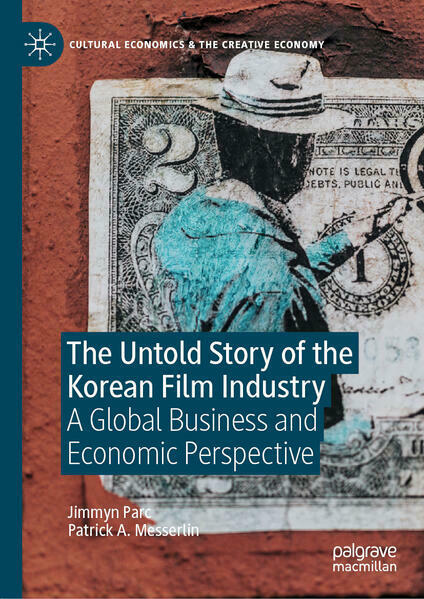 This book analyses the Korean film industry emergence and development in a global business and economic perspective. This is one of the first books to compare the film policies and industries of the world’s six largest film industries – featuring Korea as the central character – with the aim of defining the contours of what constitutes an effective film policy. It presents many cases showing that, contrary to what is often believed, an economically sound policy is a good instrument for achieving desired cultural goals. It uses a set of analytical tools – borrowed from the economic analysis of international trade policies – to provide a rich harvest of new, rigorous, and often unexpected results on the effectiveness of the existing film policies.
This book analyses the Korean film industry emergence and development in a global business and economic perspective. This is one of the first books to compare the film policies and industries of the world’s six largest film industries – featuring Korea as the central character – with the aim of defining the contours of what constitutes an effective film policy. It presents many cases showing that, contrary to what is often believed, an economically sound policy is a good instrument for achieving desired cultural goals. It uses a set of analytical tools – borrowed from the economic analysis of international trade policies – to provide a rich harvest of new, rigorous, and often unexpected results on the effectiveness of the existing film policies.
The implications found in this book are relevant not only for Korea, but for all other countries that wish to foster or enhance the competitiveness of their film industries. This book will be of interest to a wide spectrum of scholars interested in cultural studies – media and cultural specialists, political scientists, sociologists, historians – in addition to business analysts and economists specialized in cultural economics. As this book focuses on film policies and how to improve them, it will also appeal to policymakers, business figures, public relations officials, and staff from international organizations working on the film industry. - Publisher's Description
Request this Title
Taiwan Cinema as Soft Power
Lim, Song Hwee (2021)
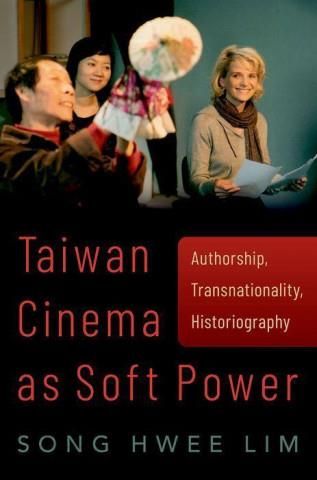 Why has Taiwanese film been so appealing to film directors, critics, and audiences across the world? This book argues that because Taiwan is a nation without hard political and economic power, cinema becomes a form of soft power tool that Taiwan uses to attract global attention, to gain support, and to build allies. Author Song Hwee Lim shows how this goal has been achieved by Taiwanese directors whose films win the hearts and minds of foreign audiences to make Taiwan a major force in world cinema.
Why has Taiwanese film been so appealing to film directors, critics, and audiences across the world? This book argues that because Taiwan is a nation without hard political and economic power, cinema becomes a form of soft power tool that Taiwan uses to attract global attention, to gain support, and to build allies. Author Song Hwee Lim shows how this goal has been achieved by Taiwanese directors whose films win the hearts and minds of foreign audiences to make Taiwan a major force in world cinema.
The book maps Taiwan's cinematic output in the twenty-first century through the three keywords in the book's subtitle-authorship, transnationality, historiography. Its object of analysis is the legacy of Taiwan New Cinema, a movement that begun in the early 1980s that has had a lasting impact upon filmmakers and cinephiles worldwide for nearly forty years. By examining case studies that include Hou Hsiao-hsien, Ang Lee, and Tsai Ming-liang, this book suggests that authorship is central to Taiwan cinema's ability to transcend borders to the extent that the historiographical writing of Taiwan cinema has to be reimagined. It also looks at the scaling down of soft power from the global to the regional via a cultural imaginary called "little freshness", which describes films and cultural products from Taiwan that have become hugely popular in China and Hong Kong. In presenting Taiwan cinema's significance as a case of a small nation with enormous soft power, this book hopes to recast the terms and stakes of both cinema studies and soft power studies in academia. - Publisher's Description
Request this Title
100 Essential Indian Films
Dasgupta, Rohit; Datta, Sangeeta (2018)
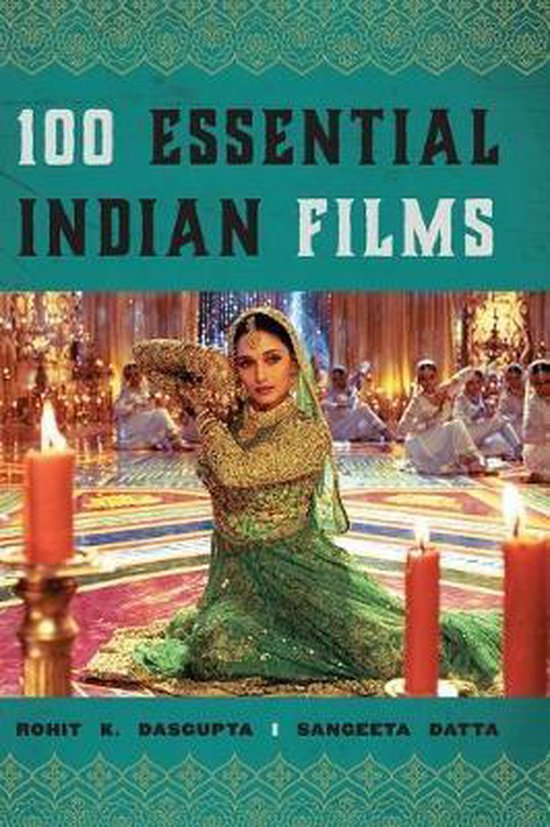 Although the motion picture industry in India is one of the oldest and largest in the world—with literally thousands of productions released each year—films from that country have not been as well received as those from other countries. Known for their impressive musical numbers, melodramatic plots, and nationally beloved stars, Indian films have long been ignored by the West but are now at the forefront of cinema studies. With the prolific number of films available, it can be difficult to know what to watch.
Although the motion picture industry in India is one of the oldest and largest in the world—with literally thousands of productions released each year—films from that country have not been as well received as those from other countries. Known for their impressive musical numbers, melodramatic plots, and nationally beloved stars, Indian films have long been ignored by the West but are now at the forefront of cinema studies. With the prolific number of films available, it can be difficult to know what to watch.
In "100 Essential Indian Films," Rohit K. Dasgupta and Sangeeta Datta identify and discuss significant works produced since the 1930s. Examining the output of different regional film industries throughout India, this volume offers a balance of box-office blockbusters, critical successes, and less-recognized cult classics. From early films by Satyajit Ray to contemporary classics such as Salaam Bombay and Lagaan, each entry includes comprehensive details about the film and situates the work in the context and history of the Indian canon.In addition to these notable productions, this book also examines key film directors and the work of major film stars in the industry. While many studies of Indian films focus on a single language’s contributions, this encyclopedia offers a comprehensive guide to productions from across the country in various languages, including Hindi, Bengali, Tamil, Malayalam, Assamese, Punjabi, Marathi, and English. 100 Essential Indian Films is an engaging volume that will appeal to both cinema scholars and those looking for an introduction to a vital component of world cinema. - Publisher's Description
Request this Title
Bollywood and Postmodernism
Sidhar Wright, Neelam (2015)
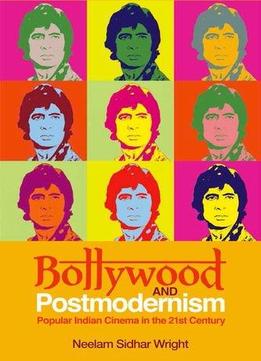 Throughout this book, I have aimed to demonstrate some of the fundamental and peculiar ways in which Bollywood cinema has formally changed after its economic liberalisation at the turn of the twenty-first century. All the film texts I have analysed, which spring from this millennium period, incorporate some form of aesthetic enterprise serving the principles and traits of the postmodern. My case studies have verified that Bollywood, as well as being global and transnational, has reached a postmodern stage and that this postmodern tendency has enabled the cinema to adopt new critical tools (such as self-critique and dismantling the authority of other dominant cinematic forms), thereby offering up new ways of reading Bollywood.
Throughout this book, I have aimed to demonstrate some of the fundamental and peculiar ways in which Bollywood cinema has formally changed after its economic liberalisation at the turn of the twenty-first century. All the film texts I have analysed, which spring from this millennium period, incorporate some form of aesthetic enterprise serving the principles and traits of the postmodern. My case studies have verified that Bollywood, as well as being global and transnational, has reached a postmodern stage and that this postmodern tendency has enabled the cinema to adopt new critical tools (such as self-critique and dismantling the authority of other dominant cinematic forms), thereby offering up new ways of reading Bollywood.
We have explored how certain aspects of Bollywood filmmaking, previously regarded as primitive, formulaic or mediocre, have become the very attributes fuelling Bollywood's creativity and artistic experimentation today. Figural excess and hyperrealism are two such devices at the core of New Bollywood's unique cinematic language, which enable the cinema to operate differently as an art form and film language. I have elaborated on how these rather complex traits function to provide a particular kind of pleasure and experience for their audiences, such as offering access to sublime emotions, a greater level of submersion in the text, multi-dimensional perspectives and synaesthesia, whilst also demonstrating how these traits may be the very aspects of Bollywood cinema that lead to increased displeasure for the Western critic or spectator, and ultimately obstruct the cinema's ability to perform well critically or commercially in other parts of the world.
This book has also challenged the common assumption that contemporary Bollywood cinema still works to maintain and preserve a pure sense of Indian national identity and cultural tradition by having these conflict with and prevail over representations of the ‘modern’ and the ‘West’ as Other. I have demonstrated how, in newer films, clear distinctions between modern/traditional, East/West and Western/Indian no longer stand. Bollywood films no longer exclusively work to unambiguously serve certain socio-political or nationalist sentiments. Instead, they now actively seek to blur or intersect these binaries in order to produce an altogether fragmented, dismantled and often contradictory representation of global Indian identity.
Further to the above, I have also revealed how these post-millennial films embrace a dissolving of distinctions between, and an alignment of, Hollywood and Bollywood formal aesthetics. - Publisher's Description
Request this Title
Roots of the New Arab Film
Armes, Roy (2018)
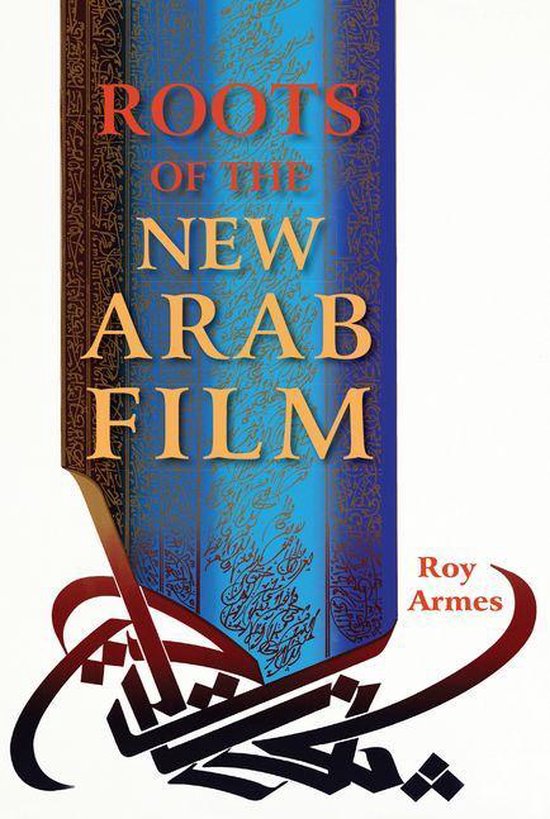 "Roots of the New Arab Film" deals with the generation of filmmakers from across North Africa and the Middle East who created an international awareness of Arab film from the mid-1980s onwards. These seminal filmmakers experienced the moment of national independence first-hand in their youth and retained a deep attachment to their homeland. Although these aspiring filmmakers had to seek their training abroad, they witnessed a time of filmic revival in Europe – Fellini and Antonioni in Italy, the French New Wave, and British Free Cinema.
"Roots of the New Arab Film" deals with the generation of filmmakers from across North Africa and the Middle East who created an international awareness of Arab film from the mid-1980s onwards. These seminal filmmakers experienced the moment of national independence first-hand in their youth and retained a deep attachment to their homeland. Although these aspiring filmmakers had to seek their training abroad, they witnessed a time of filmic revival in Europe – Fellini and Antonioni in Italy, the French New Wave, and British Free Cinema.
Returning home, these filmmakers brought a unique insider/outsider perspective to bear on local developments in society since independence, including the divide between urban and rural communities, the continuing power of traditional values and the status of women in a changing society. As they made their first films back home, the feelings of participation in a worldwide movement of new, independent filmmaking was palpable. "Roots of the New Arab Film" is a necessary and comprehensive resource for anyone interested in the foundations of Arab cinema. - Publisher's Description
Request this Title
ReFocus: The Films of Jocelyne Saab
Van de Peer, Stefanie; Rouxel, Mathilde (2021)
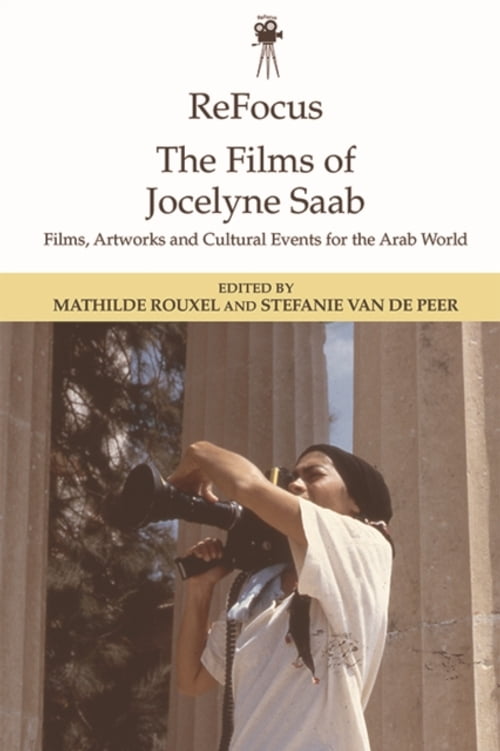 Jocelyne Saab was one of the most important female filmmakers pioneering a sense of international emancipatory world cinema from the early 1970s to her death in 2019. This book is the first English-language study dedicated to her entire oeuvre which consisted of journalism, documentaries, experimental and feature films, as well as photography, art exhibitions and curation, and film festival organization.
Jocelyne Saab was one of the most important female filmmakers pioneering a sense of international emancipatory world cinema from the early 1970s to her death in 2019. This book is the first English-language study dedicated to her entire oeuvre which consisted of journalism, documentaries, experimental and feature films, as well as photography, art exhibitions and curation, and film festival organization.
In this book, a range of international scholars integrates her work into a cohesive study of all aspects of her oeuvre – filmic, activist and artistic – representing the global significance of Saab’s work and the ongoing resonance of her ideals and activism in a worldwide perspective. - Publisher's Description
Request this Title
Animation in the Middle East
Peer, Stefanie Van (2017)
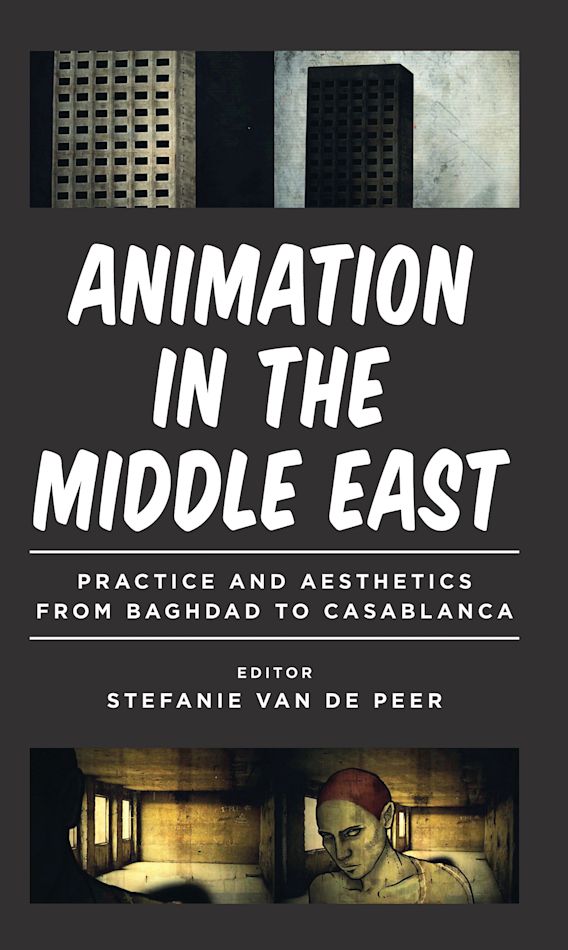 The internationally acclaimed films Persepolis and Waltz with Bashir only hinted at the vibrant animation culture that exists within the Middle East and North Africa. In spite of censorship, oppression and war, animation studios have thrived in recent years - in Egypt, Iran, Iraq, Lebanon, Morocco, Palestine, Syria and Turkey - giving rise to a whole new generation of entrepreneurs and artists.
The internationally acclaimed films Persepolis and Waltz with Bashir only hinted at the vibrant animation culture that exists within the Middle East and North Africa. In spite of censorship, oppression and war, animation studios have thrived in recent years - in Egypt, Iran, Iraq, Lebanon, Morocco, Palestine, Syria and Turkey - giving rise to a whole new generation of entrepreneurs and artists.
The success of animation in the Middle East is in part a product of a changing cultural climate, which is increasingly calling for art that reflects politics. Equally, the professionalization and popularization of film festivals and the emergence of animation studios and private initiatives are the results of a growing consumer culture, in which family-friendly entertainment is big business. "Animation in the Middle East" uncovers the history and politics that have defined the practice and study of animation in the Middle East, and explores the innovative visions of contemporary animators in the region. - Publisher's Description
Request this Title
African Film Studies
Sawadogo, Boukary (2018)
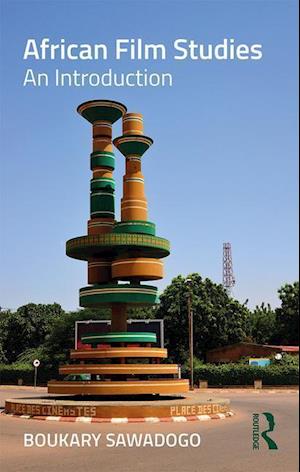 "African Film Studies: An Introduction" is an accessible and authoritative textbook on African cinema as a field of study. The book provides a succinct and comprehensive study of the history, aesthetics, and theory of sub-Saharan African cinematic productions that is grounded in the field of film studies instead of textual interpretations from other disciplines.
"African Film Studies: An Introduction" is an accessible and authoritative textbook on African cinema as a field of study. The book provides a succinct and comprehensive study of the history, aesthetics, and theory of sub-Saharan African cinematic productions that is grounded in the field of film studies instead of textual interpretations from other disciplines.
All chapters include case studies, suggestions for further reading, and screening lists to deepen the reader’s knowledge with no prior knowledge of African cinema required. Students, teachers, and general film enthusiasts would all benefit from this accessible and engaging book. - Publisher's Description
Request this Title
Queer African Cinemas
Green-Simms, Lindsey B. (2022)
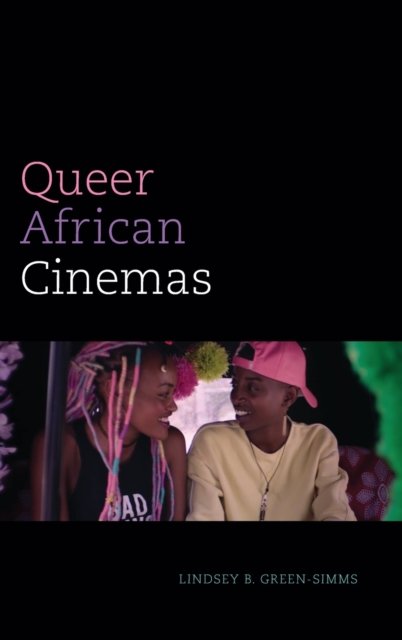 In "Queer African Cinemas," Lindsey B. Green-Simms examines films produced by and about queer Africans in the first two decades of the twenty-first century in an environment of increasing antiqueer violence, efforts to criminalize homosexuality, and other state-sanctioned homophobia. Green-Simms argues that these films not only record the fear, anxiety, and vulnerability many queer Africans experience; they highlight how queer African cinematic practices contribute to imagining new hopes and possibilities.
In "Queer African Cinemas," Lindsey B. Green-Simms examines films produced by and about queer Africans in the first two decades of the twenty-first century in an environment of increasing antiqueer violence, efforts to criminalize homosexuality, and other state-sanctioned homophobia. Green-Simms argues that these films not only record the fear, anxiety, and vulnerability many queer Africans experience; they highlight how queer African cinematic practices contribute to imagining new hopes and possibilities.
Examining globally circulating international art films as well as popular melodramas made for local audiences, Green-Simms emphasizes that in these films queer resistance—contrary to traditional narratives about resistance that center overt and heroic struggle—is often practiced from a position of vulnerability. By reading queer films alongside discussions about censorship and audiences, Green-Simms renders queer African cinema as a rich visual archive that documents the difficulty of queer existence as well as the potentials for queer life-building and survival. - Publisher's Description
Request this Title
Latin American Cinema
Hart, Stephen (2014)
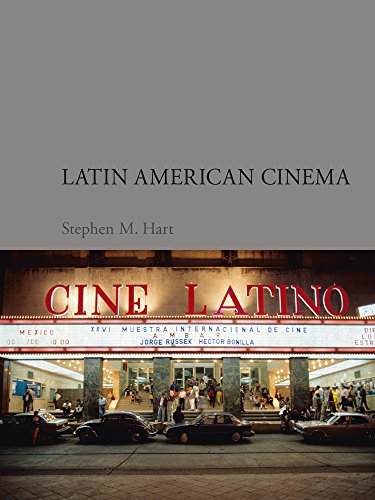 From El Megano and Black God, White Devil to City of God and Babel, Latin American films have a rich history. In this concise but comprehensive account, Stephen M. Hart traces Latin American cinema from its origins in 1896 to the present day, along the way providing original views of major films and mini-biographies of major film directors.
From El Megano and Black God, White Devil to City of God and Babel, Latin American films have a rich history. In this concise but comprehensive account, Stephen M. Hart traces Latin American cinema from its origins in 1896 to the present day, along the way providing original views of major films and mini-biographies of major film directors.
Describing the broad contours of Latin American film and its connections to major historical developments, Hart guides readers through the story of how Hollywood dominance succumbed to the emergence of the Nuevo Cine Latinoamericano and how this movement has led to the “New” New Latin American Cinema of the twenty-first century. He offers a fresh analysis of the effects of major changes in film technology, revealing how paradigm shifts such as the move to digital preceded new cinematographic techniques and visions. He also looks closely at the films themselves, examining how filmmakers express their messages. Finally, he considers the decision by a group of directors to film in English, which enhanced the visibility of Latin American cinema around the world. Featuring 120 illustrations, this clear, cogent guide to the history of this region’s cinema will appeal to fans of Central Station and Like Water for Chocolate alike. - Publisher's Description
Request this Title
The Lost Cinema of Mexico
Cosentino, Olivia; Price, Brian (2022)
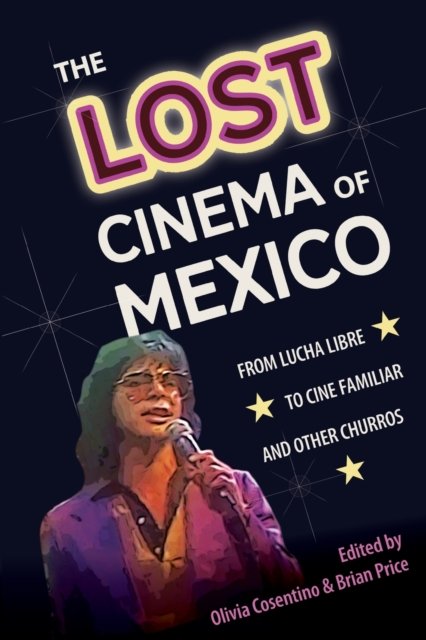 "The Lost Cinema of Mexico" is the first volume to challenge the dismissal of Mexican filmmaking during the 1960s through 1980s, an era long considered a low-budget departure from the artistic quality and international acclaim of the nation’s earlier Golden Age. This pivotal collection examines the critical implications of discovering, uncovering, and recovering forgotten or ignored films.
"The Lost Cinema of Mexico" is the first volume to challenge the dismissal of Mexican filmmaking during the 1960s through 1980s, an era long considered a low-budget departure from the artistic quality and international acclaim of the nation’s earlier Golden Age. This pivotal collection examines the critical implications of discovering, uncovering, and recovering forgotten or ignored films.
This largely unexamined era of film reveals shifts in Mexican culture, economics, and societal norms as state-sponsored revolutionary nationalism faltered. During this time, movies were widely embraced by the public as a way to make sense of the rapidly changing realities and values connected to Mexico’s modernization. These essays shine a light on many genres that thrived in these decades: rock churros, campy luchador movies, countercultural superocheros, Black melodramas, family films, and Chili Westerns.
Redefining a time usually seen as a cinematic “crisis,” this volume offers a new model of the film auteur shaped by productive tension between highbrow aesthetics, industry shortages, and national audiences. It also traces connections from these Mexican films to Latinx, Latin American, and Hollywood cinema at large. - Publisher's Description
Request this Title
Children on the Threshold in Contemporary Latin American Cinema
Randall, Rachel (2017)
 "Children on the Threshold in Contemporary Latin American Cinema: Nature, Gender, and Agency" analyzes child and adolescent protagonists in Latin American cinema.
"Children on the Threshold in Contemporary Latin American Cinema: Nature, Gender, and Agency" analyzes child and adolescent protagonists in Latin American cinema.
This book contends that child characters have taken on a critical representational role within Latin American cinema because of their position on the threshold between “nature” and “culture,” which converts them into a focus of, and a limit to, state or colonial biopower. Rachel Randall provides a comprehensive examination of the key themes and developments in boys’ and girls’ cinematic representations since the adoption of children’s rights discourses in the region. Recommended for scholars interested in Latin American studies, film studies, and cultural studies. - Publisher's Description
Request this Title
Euro Noir
Forshaw, Barry (2014)
 The invasion of foreign crime fiction, films, and TV—and not just the Scandinavian variety—has opened up incredible new options for crime fiction lovers, but the sheer volume of new European writers and films can daunting.
The invasion of foreign crime fiction, films, and TV—and not just the Scandinavian variety—has opened up incredible new options for crime fiction lovers, but the sheer volume of new European writers and films can daunting.
This book provides a highly readable guide for those wanting to look further than the obvious choices as well as a perfect shopping list for what to watch or read before that trip to Paris, Rome, or Berlin. "Euro Noir" presents a roadmap to the territory and is the perfect travel guide to the genre. From Italy, the guide discusses such influential authors as Andrea Camilleri and Leonardo Sciascia; Mafia crime dramas Romanzo Criminale and Gomorrah; and of the gruesome Gialli crime films. From France and Belgium, it covers important writers from Maigret's creator Georges Simenon to today's Fred Vargas; cult television programs Braquo and Spiral; and films from the classic heist movie Rififi to modern greats such as Hidden, Mesrine, and Tell No One. German and Austrian greats include Jakob Arjouni and Jan Costin Wagner, and such crime films as Run Lola Run and The Lives of Others. The best crime writing and filmmaking from Spain, Portugal, Greece, Holland, and other European countries are also covered. - Publisher's Description
Request this Title
Films on Ice
MacKenzie, Scott; Westerstahl Stenport, Anna (2015)
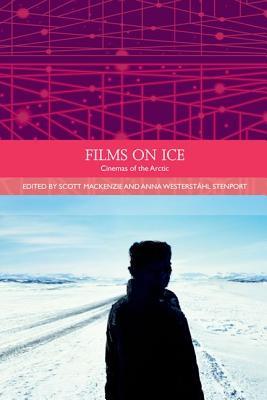 The first book to address the vast diversity of Northern circumpolar cinemas from a transnational perspective, "Films on Ice: Cinemas of the Arctic" presents the region as one of great and previously overlooked cinematic diversity. With chapters on polar explorer films, silent cinema, documentaries, ethnographic and indigenous film, gender and ecology, as well as Hollywood and the USSR’s uses and abuses of the Arctic, this book provides a groundbreaking account of Arctic cinemas from 1898 to the present.
The first book to address the vast diversity of Northern circumpolar cinemas from a transnational perspective, "Films on Ice: Cinemas of the Arctic" presents the region as one of great and previously overlooked cinematic diversity. With chapters on polar explorer films, silent cinema, documentaries, ethnographic and indigenous film, gender and ecology, as well as Hollywood and the USSR’s uses and abuses of the Arctic, this book provides a groundbreaking account of Arctic cinemas from 1898 to the present.
Challenging dominant notions of the region in popular and political culture, it demonstrates how moving images (cinema, television, video, and digital media) have been central to the very definition of the Arctic since the end of the nineteenth century. Bringing together an international array of European, Russian, Nordic, and North American scholars, Films on Ice radically alters stereotypical views of the Arctic region, and therefore of film history itself. - Publisher's Description
Request this Title
Polish Cinema: A History
Haltof, Marek (2019)
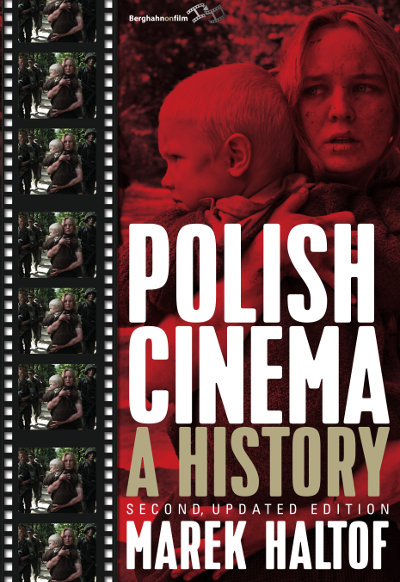 First published in 2002, Marek Haltof’s seminal volume was the first comprehensive English-language study of Polish cinema, providing a much-needed survey of one of Europe’s most distinguished―yet unjustly neglected―film cultures. Since then, seismic changes have reshaped Polish society, European politics, and the global film industry.
First published in 2002, Marek Haltof’s seminal volume was the first comprehensive English-language study of Polish cinema, providing a much-needed survey of one of Europe’s most distinguished―yet unjustly neglected―film cultures. Since then, seismic changes have reshaped Polish society, European politics, and the global film industry.
This thoroughly revised and updated edition takes stock of these dramatic shifts to provide an essential account of Polish cinema from the nineteenth century to today, covering such renowned figures as Kieślowski, Skolimowski, and Wajda along with vastly expanded coverage of documentaries, animation, and television, all set against the backdrop of an ever-more transnational film culture. - Publisher's Description
Request this Title
Spanish Horror Film
Antonio Lázaro-Reboll (2022)
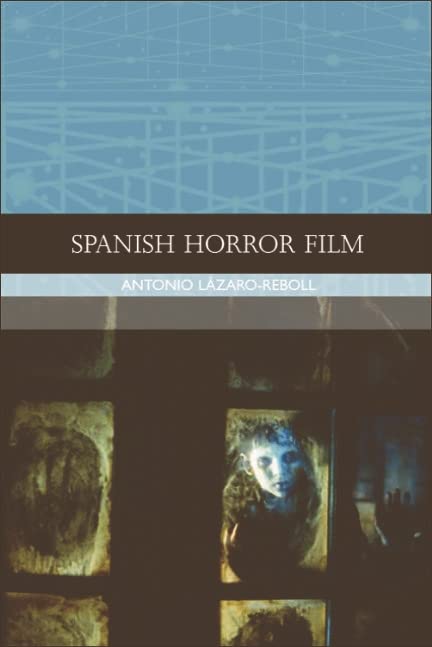 "Spanish Horror Film" is the first in-depth exploration of the genre in Spain from the 'horror boom' of the late 1960s and early 1970s to the most recent production in the current renaissance of Spanish genre cinema, through a study of its production, circulation, regulation and consumption. The examination of this rich cinematic tradition is firmly located in relation to broader historical and cultural shifts in recent Spanish history and as an important part of the European horror film tradition and the global culture of psychotronia.
"Spanish Horror Film" is the first in-depth exploration of the genre in Spain from the 'horror boom' of the late 1960s and early 1970s to the most recent production in the current renaissance of Spanish genre cinema, through a study of its production, circulation, regulation and consumption. The examination of this rich cinematic tradition is firmly located in relation to broader historical and cultural shifts in recent Spanish history and as an important part of the European horror film tradition and the global culture of psychotronia.
Key Features: The first critical study on Spanish horror film to be published in English. An overview of key directors, cycles and representative films as well as of more obscure and neglected horror production. A detailed analysis of the work of directors such as Jesús Franco, Amando de Ossorio, Narciso Ibáñez Serrador, Eloy de la Iglesia, Jaume Balagueró, Nacho Cerdá and Guillermo del Toro's "Spanish" films.*A focus on critical and cult contexts of reception in Spain, Great Britain and USA. - Publisher's Description
Request this Title
Twenty-One Landmark European Films 1939-1999
Cardullo, Bert (2015)
 The essays in this insightful film-analysis text show cover twenty-one of the best European films made between the coming of World War II and the end of the twentieth century, showing what makes each of them outstanding. These essays are clear and readable—that is, sophisticated and meaty yet not overly technical or jargon-heavy. They will make perfect introductions to their respective films as well as important contributions to the field of film studies in general.
The essays in this insightful film-analysis text show cover twenty-one of the best European films made between the coming of World War II and the end of the twentieth century, showing what makes each of them outstanding. These essays are clear and readable—that is, sophisticated and meaty yet not overly technical or jargon-heavy. They will make perfect introductions to their respective films as well as important contributions to the field of film studies in general.
Written with university students in mind, these essays cover some of the central films treated—and central issues raised—in today’s cinema courses and provide students with practical models to help them improve their own writing and analytical skills. A list of questions for discussion is included, to trigger further thinking among film buffs and to help educators prepare for class.
The book is aimed at students, teachers, and cinephiles with an interest in European cinema in particular and cinema studies in general, as well as at those educated readers with an interest in the practice of film analysis and criticism. - Publisher's Description
Request this Title
